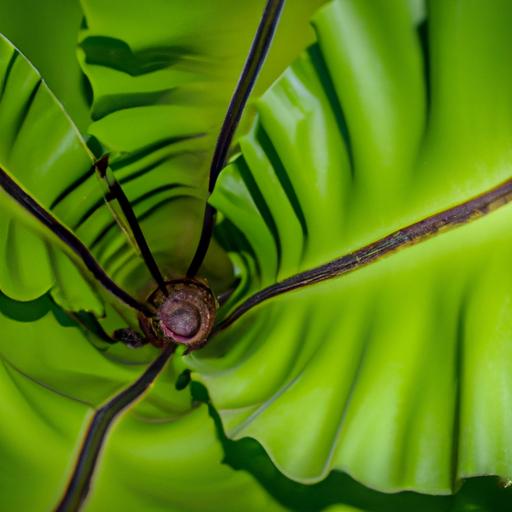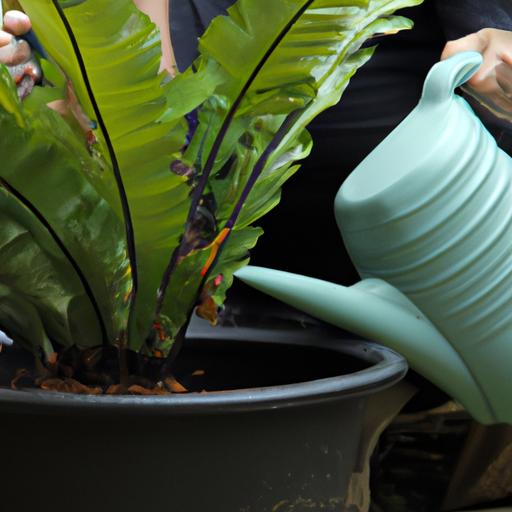Discover the ideal watering routine for your birds nest fern! Learn how often to water birds nest fern and maintain its health and beauty. Expert tips inside!
Discover the Perfect Watering Routine for Optimal Growth of Your Birds Nest Fern
Are you a proud owner of a stunning birds nest fern? This lush and vibrant plant is known for its unique fronds that resemble a bird’s nest, adding a touch of elegance to any indoor or outdoor space. To ensure your birds nest fern thrives and flourishes, it is essential to understand its watering needs and establish a proper watering routine. In this article, we will delve into the intricacies of watering your birds nest fern, providing you with expert tips and guidelines to maintain its health and beauty.
Introduction
The birds nest fern, scientifically known as Asplenium nidus, is a popular choice among plant enthusiasts due to its striking appearance and relatively low maintenance requirements. Native to tropical regions, this fern thrives in warm and humid environments, making it an ideal choice for indoor spaces. However, improper watering can lead to adverse effects on the fern’s growth and overall health.

Understanding Birds Nest Fern’s Watering Needs
To determine the ideal watering routine for your birds nest fern, it is crucial to consider various factors that influence its watering requirements. The following elements play a significant role in maintaining the health of your fern:
- Humidity: Birds nest ferns thrive in high humidity environments, mimicking their natural habitat. Aim to maintain a humidity level between 50% to 80% to ensure optimal growth.
- Light Exposure: Proper light exposure is vital for the photosynthesis process in your fern. Avoid placing it in direct sunlight, as it can scorch the leaves, but ensure it receives bright, indirect light.
- Potting Medium: Well-draining potting soil is essential for the birds nest fern. A mixture of peat moss, perlite, and compost provides adequate drainage, preventing waterlogged roots.

How Often to Water Birds Nest Fern
Determining the frequency of watering your birds nest fern can be a bit tricky, as it depends on various factors, including environmental conditions and the fern’s specific needs. Here are some general guidelines to help you establish a suitable watering routine:
- The Finger Test: Before watering, insert your finger about an inch into the soil. If it feels slightly dry, it’s time to water your fern. However, if the soil is still moist, hold off on watering to prevent overhydration.
- Watering Frequency: On average, birds nest ferns require watering once or twice a week. However, this may vary based on factors such as humidity levels, temperature, and pot size. Pay attention to the fern’s specific needs and adjust the frequency accordingly.
- Water Quantity: Ensure you water your fern thoroughly, allowing water to flow through the drainage holes. This helps flush out any accumulated salts or toxins from the soil, promoting healthy root growth.
- Environmental Factors: Take into account the climate and season. During hot summers or dry winters, your fern may require more frequent watering. Adjust your watering routine accordingly to accommodate these changes.
Signs of Overwatering or Underwatering:
- Overwatering: If you notice yellowing or wilting fronds, root rot, or a musty odor emanating from the soil, you may be overwatering your fern.
- Underwatering: On the other hand, if the fronds appear dry, brown, or curling at the edges, your fern may be suffering from underwatering. Adjust your watering routine accordingly to prevent further damage.
FAQ: Common Questions about Watering Birds Nest Fern
-
How can I determine if my fern needs water?
- The finger test explained earlier is a reliable method to gauge the moisture levels in the soil. Additionally, observe the appearance of the fronds for any signs of dehydration.
-
Is tap water suitable for watering?
- Tap water is generally safe for watering your birds nest fern. However, if your tap water contains high levels of chlorine or fluoride, it is advisable to let it sit overnight before using it for watering. Alternatively, you can use filtered or distilled water.
-
Can I use a spray bottle to water the fern?
- While misting the fronds with a spray bottle can provide some hydration, it is essential to water the soil directly as well. Misting alone may not be sufficient to fulfill the fern’s watering requirements.
-
What should I do if my fern is not absorbing water properly?
- If your birds nest fern is struggling to absorb water, consider soaking the entire pot in a basin or sink filled with water for about an hour. This method, known as the “bottom-up” watering technique, allows the roots to absorb moisture effectively.
Conclusion
In conclusion, understanding how often to water your birds nest fern is crucial for its overall health and appearance. By considering factors such as humidity, light exposure, and potting medium, you can establish an effective watering routine. Remember to monitor the moisture levels in the soil, adjust watering frequency based on environmental conditions, and be mindful of signs of overwatering or underwatering.
At Rowe Organic, we are dedicated to providing expert tips and inspiration in organic gardening. Cultivate, nurture, and grow naturally with our comprehensive guides on various plants, including the birds nest fern. Visit our plants page to explore more green companions for your home or learn about how often to water the polka dot plant. Embrace the beauty of nature and create your green sanctuary with Rowe Organic.
Note: This article is for informational purposes only and should not replace professional advice. Consult a horticulturist or plant expert for specific guidance tailored to your birds nest fern’s needs.
